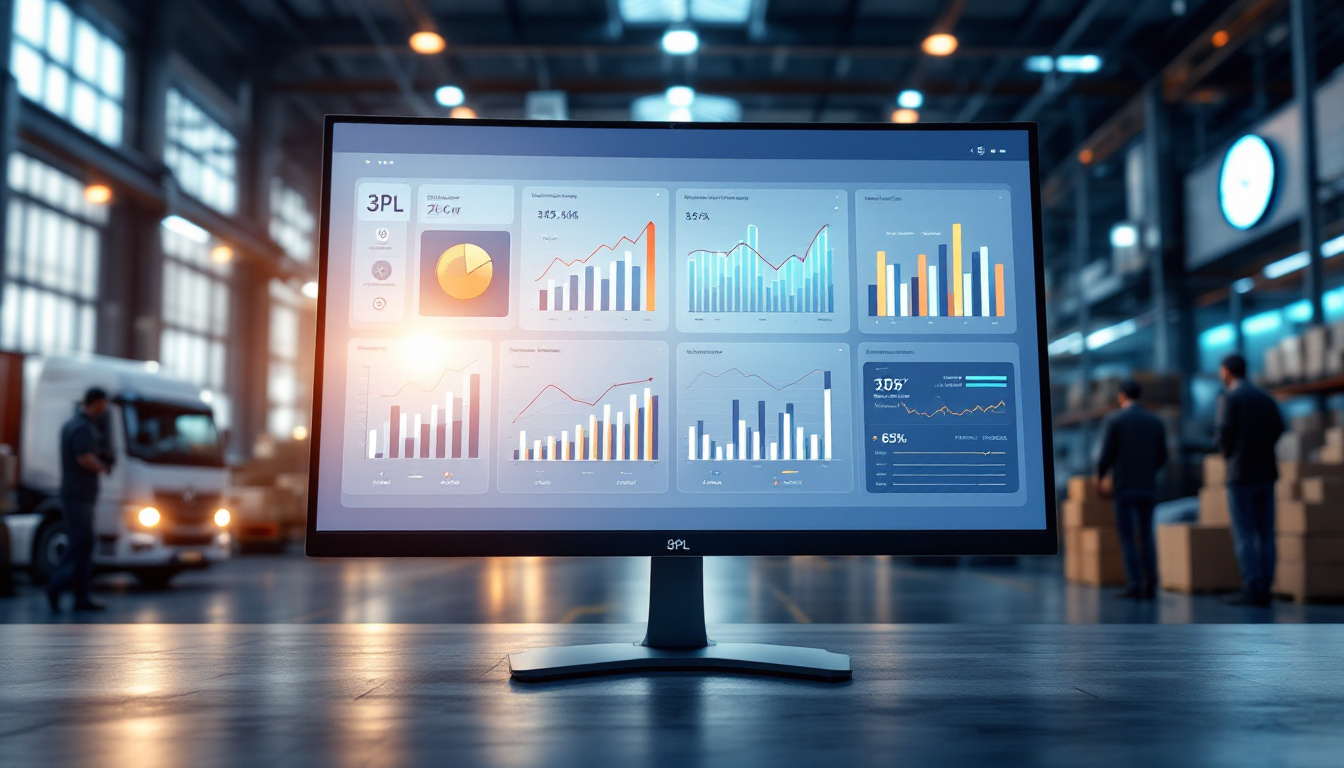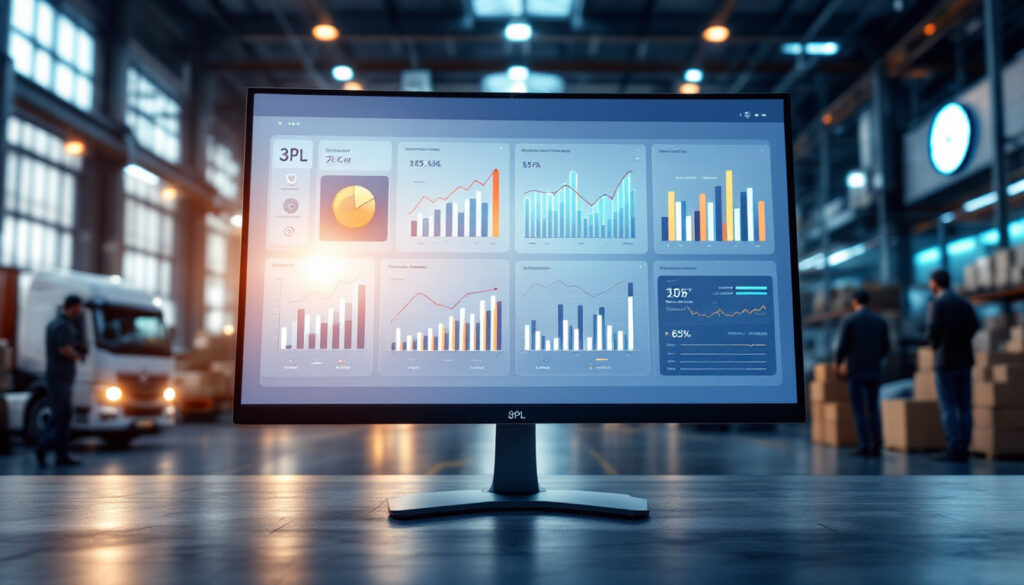Efficient warehouse management is essential to staying competitive, and WMS integrations are a big part of that. They enable your Warehouse Management System to connect with other tools and platforms, making operations smoother and more efficient. Whether it’s syncing inventory with your e-commerce platform or automating data transfers, these integrations simplify complex processes and reduce manual work. But not all integrations are created equal—choosing the right ones can significantly impact your business in 2025. If you’re curious about the tools you’ll need, check out WMS Integration Types for tailored guidance.
Understanding WMS Integrations
Warehouse Management Systems (WMS) are the backbone of modern warehouses, and their ability to integrate with other systems plays a crucial role in optimizing operations. WMS integrations connect your WMS with vital platforms like e-commerce, ERP, shipping carriers, and more, streamlining processes and reducing the chances of errors. In a fast-paced landscape like 2025, these integrations are becoming indispensable for businesses looking to stay competitive. Let’s break down what makes WMS integrations effective and why they matter now more than ever.
Key Features of Effective WMS Integrations
Not all WMS integrations are equal. The ones that stand out share critical features designed to make your operations smoother, more efficient, and scalable. Here are some of the key functionalities you need to look for:
- Data Accuracy: Accurate data exchange is essential. A good WMS integration should ensure that key information—like inventory levels, order details, and shipment status—is always updated in real-time.
- Seamless Communication Between Systems: Integrations must enable smooth interoperability between the WMS and other platforms, like ERP solutions, shipping carriers, and e-commerce websites. For example, syncing your inventory across multiple sales channels is essential for avoiding overselling or stockouts.
- Scalability: As businesses grow, their operational needs evolve. The best integrations are scalable, allowing for additional features, platforms, or tools without requiring a complete overhaul of the system.
To get started on understanding different types of integrations and their potential for your business, check out WMS Integration Types.
Why WMS Integrations Matter in 2025
The importance of WMS integrations is amplified by shifting trends in logistics, driven by the rise of e-commerce, faster shipping demands, and the need to reduce errors. Here’s why they’re essential:
- Improved Efficiency: Whether it’s reducing manual data entry or automating routine tasks, WMS integrations enable your warehouse to operate with maximum efficiency. For instance, automating label printing for shipping saves time and eliminates mistakes.
- Error Reduction: Manual processes often lead to errors, from incorrect shipments to data mismatches. By automating data flows via integrations, you significantly reduce these risks, ensuring better accuracy and happier customers.
- Adaptability to E-commerce Growth: With online shopping continuing to surge, warehouses must manage an increasing number of SKUs, orders, and returns. Integrating with e-commerce platforms and marketplaces helps manage this complexity, keeping systems aligned and responsive.
If you’re wondering what features to prioritize in your warehouse operations to meet the challenges of 2025, take a look at Top 10 Warehouse Management System Features.
By focusing on integrations that boost efficiency, minimize errors, and adapt to future trends, you’re setting your business up for success in an evolving logistics environment.
Top 5 WMS Integrations You Need in 2025
In 2025, optimizing warehouse efficiency means leveraging the right integrations to empower your Warehouse Management System (WMS). The right tools can simplify inventory handling, improve communication, and align your processes seamlessly with broader business strategies. Here are five critical WMS integrations you can’t afford to overlook as you plan ahead.
ERP Integration
Connecting your WMS to an ERP (Enterprise Resource Planning) system can transform how your warehouse collaborates with other business functions. An ERP integration ensures that crucial warehouse data like stock levels, purchase orders, and shipping statuses sync seamlessly with company-wide operations. This alignment helps you maintain accurate reporting, reduce redundancies, and pivot strategies without delays.
For example, when your sales and supply chain teams share synchronized data from the ERP and WMS, you minimize the risk of overselling or running into unnecessary backorders. Want to explore potential ERP integration benefits for your system? Check out 200+ Integrations For Seamless Warehouse Operation.
Shipping and Logistics Integration
The ability to integrate your WMS with shipping platforms is a game-changer for streamlining deliveries and tracking packages. This type of integration automates tasks such as generating shipping labels, coordinating carriers, and providing real-time tracking updates to customers. The result? Faster dispatch times and happier customers who appreciate transparency in their delivery status.
By automating workflows between your WMS and shipping systems, you can also reduce errors like mislabeling or shipment delays. Discover powerful solutions to streamline shipping and logistics with 200+ Integrations For Seamless Warehouse Operation.
E-commerce Platform Integration
If you manage online sales, connecting your WMS to an e-commerce platform is non-negotiable. Integrations with platforms like Shopify, Magento, or WooCommerce ensure smooth processing of online orders, real-time inventory updates, and centralized data management.
For instance, an order placed on your Shopify store can trigger the WMS to pick, pack, and prepare shipments without additional manual input. This auto-sync not only saves time but also prevents stock discrepancies, ensuring accurate inventory counts across all your channels. Improve your e-commerce operations with the Leanafy ArcDynamic Integration.
Barcode and RFID Integration
Speed and accuracy are essential in modern warehouses, and that’s where barcode and RFID (Radio Frequency Identification) integrations excel. Adding these systems to your WMS allows for more efficient inventory scanning, faster picking and packing, and fewer errors in stock management.
RFID, in particular, is becoming a preferred choice for larger operations, as it doesn’t require a direct line of sight for scanning. Whether you rely on barcodes or RFID tech, consistency in data transfer to the WMS eliminates the guesswork, boosting precision and productivity. Curious about how these technologies revolutionize warehouse operations? Learn more in How QR Codes Revolutionize Inventory Management in 2025.
Accounting Software Integration
To close the loop on smooth warehouse operations, integrating your WMS with accounting software ensures financial accuracy. Automated data syncing tracks inventory costs, monitors cash flow, and eliminates frustrations caused by manual bookkeeping errors.
For example, updates in stock levels within your WMS should automatically reflect in your accounting solutions, providing a real-time grasp of profit margins or cost adjustments. Not only does this help you stay on top of financial reporting, but it also simplifies tax preparation and compliance. Explore how integrated tools can simplify your accounting with 200+ Integrations For Seamless Warehouse Operation.
By embracing these five WMS integrations in 2025, you’re setting up your warehouse operations for smoother, smarter, and highly efficient workflows.
Challenges and Solutions in WMS Integrations
Integrating a Warehouse Management System (WMS) into your operations can unlock efficiency, but it’s not without its difficulties. For businesses in 2025, successfully implementing these integrations is a key differentiator. Below, we’ll explore some of the common challenges businesses face and provide actionable solutions to overcome them.
Common Challenges
Even though WMS integrations streamline processes, businesses can run into several potential obstacles:
- Compatibility Issues Not all WMS platforms seamlessly work with the systems they need to integrate with. For example, older business software or custom-built solutions may require extensive reworking to communicate effectively with a modern WMS.
- High Costs From implementation fees to ongoing support and updates, the financial burden associated with WMS integrations can be substantial. Small to medium-sized businesses often struggle to allocate the necessary budget.
- Lack of Technical Expertise Many businesses lack in-house teams with the expertise needed to handle complex technical work. Troubleshooting integration-related issues can become time-consuming and stall operations.
- Data Security Concerns As integrations involve significant data exchanges, concerns about the safety and privacy of business intelligence can act as a barrier, especially for businesses new to cloud-based WMS platforms.
For a deeper dive into how modern WMS platforms address operational concerns, you can explore more details in Top 10 WMS Systems in 2024.
How to Overcome These Challenges
Overcoming these challenges doesn’t have to be overwhelming. By following practical steps, you can mitigate potential roadblocks and ensure successful WMS integrations:
- Choose Scalable Solutions Opt for a WMS that supports a wide range of integrations. Ensure it is compatible with your existing systems and can grow with your business. Many modern platforms, like cloud-based WMS, are designed to adapt to new processes and technologies. Learn how scalability transforms warehouses by visiting Cloud WMS Guide.
- Invest in Vendor Support Rely on providers that offer robust vendor support, from implementation to post-integration troubleshooting. Clear communication with your vendor about your needs can streamline the integration process.
- Allocate a Clear Budget Budgeting appropriately for the implementation phase is essential. Beyond initial costs, consider solutions that minimize recurring expenses or offer bundled packages for integrations.
- Upskill Your Team Train internal teams on how to handle basic troubleshooting or oversee data exchanges. A well-prepared staff can reduce reliance on third-party consultants and avoid delays.
- Prioritize Data Security Work with systems that offer strong encryption and accessible security features. Ensure any integrations align with your company’s compliance requirements.
- Take a Phased Approach Avoid rolling out multiple integrations at the same time. Begin with the most business-critical systems (e.g., ERP or e-commerce). Once successful, expand to additional platforms like barcode scanning or accounting software.
For more specific advice on the types of integrations suited for smart warehouses, check out EDI Integration in Warehouse Management Systems.
By anticipating challenges and implementing step-by-step strategies, your business can transform potential roadblocks into opportunities for seamless operations.
Future Trends in WMS Integrations
As technology evolves, the future of Warehouse Management System (WMS) integrations is being shaped by advances like artificial intelligence and the rise of IoT. These trends are not just technical upgrades—they’re transformational shifts that redefine how warehouses operate. In this section, we’ll explore two game-changing integrations shaping the future of WMS: AI-driven decision-making and IoT advancements.
AI-Driven Decision Making: Optimizing WMS Through Artificial Intelligence
Artificial intelligence is revolutionizing warehouses by making systems smarter and faster at responding to challenges. When integrated into a WMS, AI doesn’t just analyze data—it uses it to make real-time decisions that result in optimized workflows. For example, AI can predict demand spikes, suggest reordering schedules, or even prioritize which orders to process first for maximum efficiency.
AI integration also significantly reduces human error. Imagine automated slotting systems that optimize item placement based on historical picking data. Products are stored in optimal locations, cutting down travel time for workers and improving overall efficiency. AI ensures your warehouse is in sync, addressing priorities dynamically rather than reacting only when problems arise. Interested to know more about how warehouse processes are evolving with smarter WMS? Visit Lean Warehouse Management System.
Additionally, AI systems excel at managing labor. They provide predictive insights, helping managers allocate their workforce more efficiently by factoring in real-time data, such as order volumes or equipment availability. This makes every resource count—a crucial benefit when efficiency margins are razor-thin.
For 2025, AI will become less of an option and more of a necessity in warehouse operations. From intelligently rerouting pick paths to preemptively identifying equipment failures, AI transforms WMS into a proactive tool built for scalability. If you’re planning to implement AI features into your system, the Pick Path Optimization Guide is a great place to start.
Integration with Internet of Things (IoT): Smarter Warehouse Connectivity
The Internet of Things (IoT) is bridging the gap between physical devices and WMS platforms, allowing smarter, more connected warehouse operations. Smart sensors, wearables, and equipment like forklifts or conveyors now communicate directly with your WMS, ensuring real-time data updates across the board.
Take inventory tracking as an example. IoT-enabled tags can provide real-time updates on stock levels, locations, and even condition, reporting directly back to your WMS. This eliminates manual inventory counts, saving thousands of work hours yearly and reducing errors drastically. You can learn more about why adopting IoT devices as part of your strategy is critical by visiting Why Multi-Device WMS is Essential for 3PL Success in 2025.
IoT also enhances equipment monitoring and maintenance. Sensors embedded in critical machinery like conveyor belts or lift trucks monitor their performance continually. If a potential issue arises, the WMS receives an alert, allowing for proactive maintenance. This can prevent costly breakdowns and avoid unplanned disruptions in workflows.
Wearable IoT devices for workers—such as smart gloves or wristbands—are also making waves. These tools track worker activity and guide them on efficient routes within the warehouse, minimizing unnecessary effort while improving accuracy.
The real-time communication between IoT devices and the WMS creates a level of operational transparency that’s hard to achieve with traditional systems. This connectivity will only grow, leading to faster, more efficient, and less error-prone warehouses. For more insights into IoT-driven warehousing improvements, take a look at Why 3PLs Need a Comprehensive WMS Like Leanafy in 2025.
As we head toward 2025, both AI and IoT integrations will become standard tools for warehouses looking to maintain a competitive edge. By embracing these technologies, companies can ensure they’re not just keeping up but moving ahead.
Conclusion
WMS integrations are no longer just an option—they are a necessity for optimizing warehouse operations in 2025. From ERP systems to IoT sensors, the right tools enable real-time data sharing, automate repetitive tasks, and align your warehouse seamlessly with broader business goals.
Prioritizing integrations like e-commerce platforms, shipping systems, and accounting software isn’t just about staying efficient. It ensures accuracy, enhances scalability, and allows you to respond dynamically to changing market demands. Incorporating barcode and RFID technologies also adds measurable precision, elevating your warehouse efficiency to new heights.
Looking for actionable steps to refine your operations? Explore practical strategies tailored for businesses by checking out the What is a WMS and Why Do You Need One?. Stay proactive in preparing your warehouse for tomorrow’s challenges.




